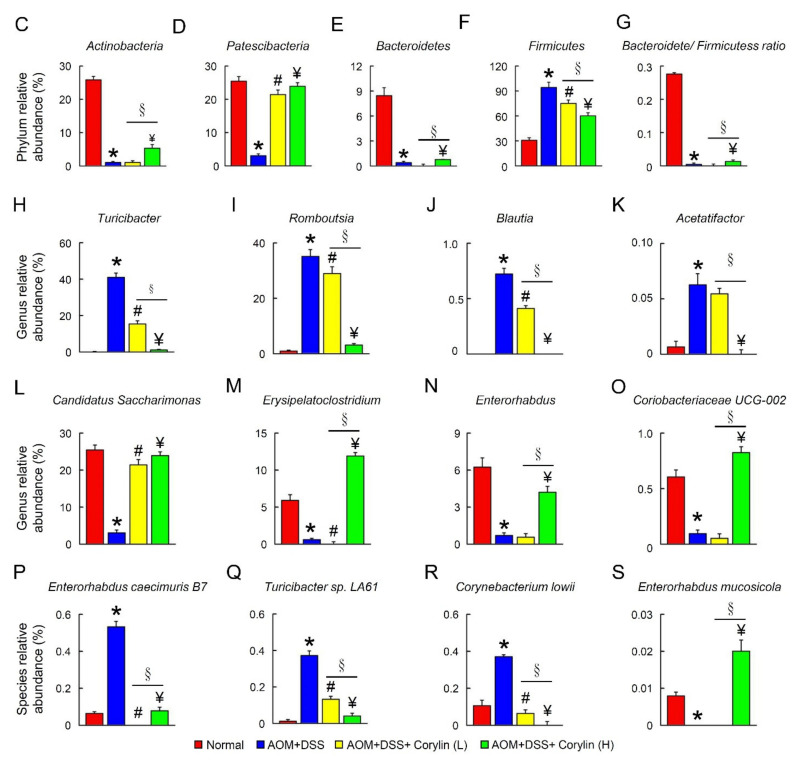Figure 10.
Corylin alters the intestinal microbial composition in AOM/DSS-induced-colitis-associated cancer mice. Microbial community bar plot by (A) phylum and (B) class relative abundance (%). Phylum levels of (C) Actinobacteria, (D) Patescibacteria, (E) Bacteroidetes, (F) Firmicutes, and (G) Bacteroidetes/Firmicutes ratio. Genus levels of (H) Turicibacter, (I) Romboutsia, (J) Blautia, (K) Acetatifactor, (L) Candidatus Saccharimonas, (M) Erysipelatoclostridium, (N) Enterorhabdus, and (O) Coriobacteriaceae UCG-002. Species abundance of (P) Enterorhabdus caecimuris B7, (Q) Turicibacter sp. LA61, (R) Corynebacterium lowii, and (S) Enterorhabdus mucosicola. Values express the mean ± standard error. The number of mice per experiment is n = 5. * p < 0.05, Normal compared with AOM/DSS; # p < 0.05, AOM/DSS compared with AOM/DSS + Corylin (L); ¥ p < 0.05, AOM/DSS compared with AOM/DSS + Corylin (H); § p < 0.05, DSS + Corylin (L) compared with DSS + Corylin (H). AOM, azoxymethane; DSS, dextran sodium sulfate.


